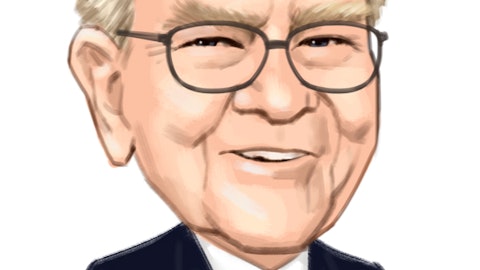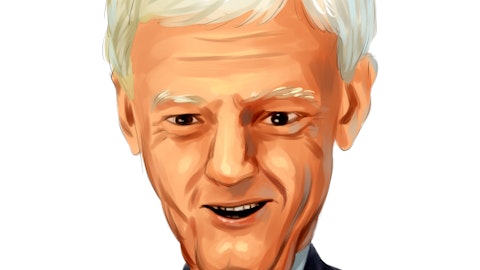Union Pacific Corporation (NYSE:UNP)
If you think about the continental U.S. as a monopoly board, there are four major railroads: Union Pacific and BNSF in the west and Norfolk Southern and CSX in the east. Naturally there are smaller track operators, but as far as the largest of railroads go, those are your options.
If I had to guess, those exact companies – or at the very least their underlying assets – will be around much longer than you or I. Although the tracks are not literally monopolies, the barriers to entry effectively make it so. Think about what it would require if you wanted to set up a competing route from say Cleveland to Miami or Los Angeles to Omaha.
Aside from the massive amounts of upfront capital that it would require, you’d be further stymied by getting approval to go through the backyards of thousands of properties. Moreover, you’d have to make the case that doing so would be in the best interest of all those parties. To be honest, I’m not sure if it could be done and even if it could I’m even more uncertain as to if you’d want to try. The infrastructure is already there.
That’s the good news with railroads – the monopoly like business model allows for reasonable economic rents to collected. And often it’s a benefit to the consumer in the way of more efficient transportation.
There are a couple of things that I don’t like as much about the industry. For one, even with an entrenched set of assets, it’s still a highly capital intensive business. Unlike say Visa Inc (NYSE:V) which might have to add some servers, with Union Pacific you have to manually repair and keep up thousands of miles of track each year.
This has an important effect. As Warren Buffett indicated in his most recent shareholder letter the depreciation charge for railroads is usually far short of the capital outlays required to keep the railroad running properly. As such, accounting earnings often overstate the “true economic earnings.”
Additionally, there exists a factor of cyclicality in shipping goods that isn’t quite as pronounced in other businesses. The economy ebbs and flows, and thus a railroads profits tend to as well.
With these thoughts in mind, I like to be cautious when I contemplate the future for a company like Union Pacific. Personally that means coming up with a “no growth” situation and seeing what shareholders could expect from that outcome.
If Union Pacific Corporation (NYSE:UNP) the business did not grow at all, that could mean earning $4.8 billion annually for the next decade – 0% business growth, but still an enormous amount of profits. With a net payout ratio around 70%, you would expect the company to keep paying dividends and repurchasing shares. So while the business would not be growing in this scenario, the per share metrics very well could be.
Investors might still anticipate 4% to 6% annual returns in this situation. You have a ~3% dividend yield, coupled with a few percent of per share growth as a result of the share repurchase program. And if growth does come along, investor returns could be much higher. The lower the valuation (as created by a much lower share price), the lower the “investment bar.”
Follow Union Pacific Corp (NYSE:UNP)
Follow Union Pacific Corp (NYSE:UNP)
Franklin Resources, Inc. (NYSE:BEN)
Once again there are things to like with this security and things that perhaps create a cause for concern. In the last year shares were trading above $50, now the number is under $40.
The question you have to ask yourself is whether or not you believe the business is that much worse off, or if the current price could be offering an opportunity.
Let’s start with some things that you might not like. For one thing, the company’s assets under management have been declining steadily as of late – from $880 billion in March of 2015 down to $742 billion in March of 2016. If your business is managing assets, that’s not the sort of thing that seems like good news.
In conjunction with this recent development has been the move away from high-cost funds and toward low-cost, passively managed ETF’s. The question becomes whether or not this is temporary or ongoing.
Personally I think something in the middle is likely. It’s sort of reminds me of General Mills, Inc. (NYSE:GIS) selling cereal. The main business of breakfast cereal has been in decline for years, but General Mills still makes a ton of money by selling Cheerios. However, the company has also recognized this trend and thus is expanding its offerings into yogurts and the like.
I think Franklin Resources, Inc. (NYSE:BEN) is in the same boat. It doesn’t sell cereal, but I think its legacy business is going to be in decline for quite some time. Perhaps not linearly, but given enough time. People will still use the “bread and butter” funds – some people never look at their 401(k) choices, much less demand lower cost options. So the company stands to continue making money from that endeavor. But to create growth, I think the business model needs to switch up a bit – something that, at least profitability-wise, isn’t yet a known factor.
That’s the troubling news, and certainly the share price has reflected this sentiment as of late. The good news is that the company has tons of cash. And I do mean tons. Last quarter reported cash and cash equivalents of $8.125 billion against total liabilities of $3.7 billion. The company could pay off everything and still have over $4 billion in liquid walking around money. And that’s just the cash component – other assets basically double the total asset amount.
This incredible balance sheet flexibility has allowed the company to pay an increasing dividend for over three decades to go along with substantial share repurchases and special dividends. Franklin Resources long dividend history makes it 1 of just 50 Dividend Aristocrats – stocks with 25+ years of consecutive dividend increases.
The dividend yield isn’t that impressive – although the lower share price has certainly made this higher – but it is exceptionally well covered.
Follow Franklin Resources Inc (NYSE:BEN)
Follow Franklin Resources Inc (NYSE:BEN)





